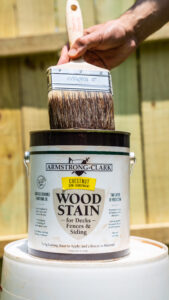Q: I’m remodeling my kitchen, which will feature white cabinets, white crown molding and white baseboard trim throughout. For a sink backsplash, I thought the look of baseboard trim would tie in nicely to the overall décor, but I don’t want the wood trim to decay when exposed to water. Is there any problem with making an economical baseboard-like backsplash using PVC trim?
A: Polyvinyl chloride (PVC) is not affected by water, so it should work well as a backsplash material. It won’t rot, split or swell. Plus, it has a similar workability as pine. Using standard woodworking tools, you can saw it, glue it, drill it, nail it and use a router to create decorative molding profiles. Use PVC cement to join the trim boards together. To paint it, just clean the surface first and use regular house paint.
One a side note, you might also consider tileboard as another economical alternative. Companies such as Georgia-Pacific offer durable, yet decorative, hardboard panels that are easy-to-maintain and install quickly and easily with standard tools. Designed for high-moisture areas, such as kitchens, baths and laundry rooms, tileboard features a tough, baked-on melamine finish, is water-resistant and can be cleaned easily with soap and water. Typically available in lightweight 4-by-8-foot panels, tileboard is available in a wide selection of colors and patterns in both flat and scored surfaces for lots of decorating options.
The EHT staff has used tileboard as a backsplash in the past. The particular pattern we chose was a glossy white 4-by-4″ tile design with scored grout lines. We ripped a “course” of the tiles on a table saw and glued the strip along the rear of the counterop as the backsplash. We then used quarter-round PVC trim to line the joint between the backsplash and countertop. Next, just seal everything up with some mildew-resistant caulk.


